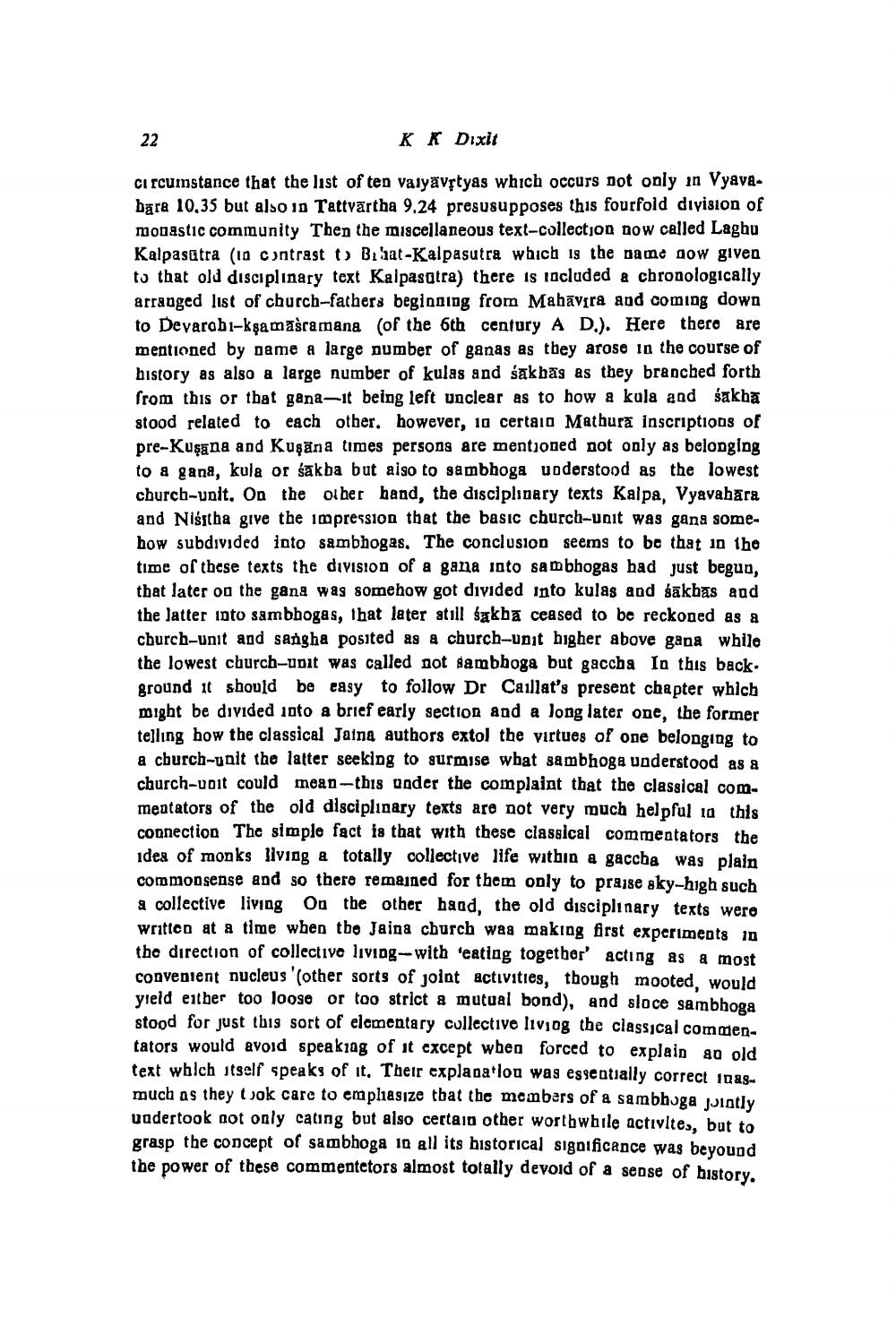________________
22
KK Dixit
circumstance that the list of ten vaiyavştyas which occurs not only in Vyavabara 10,35 but also jo Tattvārtha 9.24 presusupposes this fourfold division of monastic community Then the miscellaneous text-collection now called Laghu Kalpasutra (10 contrast Biat-Kalpasutra which is the name now given to that old disciplinary text Kalpasatra) there is tocluded a chronologically arranged list of church-fachers beginoing from Mahavira and coming down to Devarabi-kşamašcamana (of the 6th century AD.). Here there are mentioned by name a large number of ganas as they arose in the course of history as also a large number of kulas and sakbās as they branched forth from this or that gana-1t being left unclear as to how a kula and sakha stood related to each other. however, 10 certaio Mathura inscriptions of pre-Kuşana and Kuşāna times persons are mentioned not only as belonging to a gana, kula or śakba but aiso to sambhoga uoderstood as the lowest churcb-unit. On the other hand, the disciplinary texts Kalpa, Vyavahara and Niśitha give the impression that the basic church-unit was gana somehow subdivided into sambhogas. The conclusion seems to be that in the time of these texts the division of a gana joto sambhogas bad just begun, that later on the gang was somehow got divided into kulas aod sākhas and the latter into sambhogas, that later still sakba ceased to be reckoned as a church-unit and sangha posited as a church-unit higher above gapa while the lowest church-unit was called not sambboga but gaccha In this back ground it should be easy to follow Dr Caillat's present chapter which might be divided into a brief early section and a long later one, the former telling how the classical Jaina authors extol the virtues of one belonging to a church-unit the latter seeking to surmise what sambhoga understood as a church-unit could mean-this under the complaint that the classical commentators of the old disciplinary texts are not very much helpful in this connection The simple fact is that with these classical commentators the idea of monks living a totally collective life within a gaccha was plain commonsense and so there remained for them only to praise sky-high such a collective living On the other hand, the old disciplinary texts were written at a time when the Jaina church was making first experiments in the direction of collective living-with eating together' acting as a most convenient nucleus '(other sorts of joint activities, though mooted, would yield either too loose or too strict a mutual bond), and sloce sambhoga stood for just this sort of elementary collective liv og the classical commentators would avoid speakiag of it cxcept when forced to explain an old text which itself speaks of it. Their explanation was essentially correct 1048much as they took care to emplasize that the members of a sambhuga jointly uadertook got only cating but also certain other worthwhile activites, but to grasp the concept of sambhoga 10 all its historical significance was beyound the power of these commentetors almost totally devoid of a sense of history.




